Like any major metropolis, Tehran suffers from its fair share of “big city problems” relating to population and pollution. The largest city in Western Asia is home to eight million people, and ranks in the top 100 most polluted cities in the world; in the late 1960s a major study identified a raft of improvements to infrastructure that were needed to cope with the city’s rapid expansion, but progress was curtailed by the Iranian Revolution of 1979, and the subsequent Iran-Iraq War of the 1980s which saw SCUD missiles wreak terrible damage.
Isolated by the schism with Western governments in the intervening years, Iran has had a hard time developing its capital’s “liveablity” factor, but it’s not all doom and gloom for the inhabitants of Tehran thanks to people like Medhi Ghadyanloo. Ghadyanloo is part of the delightfully-named Beautification Bureau of Tehran, an organisation dedicated to prettying up the urban environment through public mural art. Since 2004, the group has been responsible for 800 murals, and of those, 100 are the work of Ghadyanloo.
Through his gallery, Richard Howard-Griffin is always on the look-out for important street artists whose work is ripe for wider exposure, and he’s identified Ghadyanloo as a rare talent who deserves an international audience. In addition to his public works on the walls of Tehran, the Iranian also carries on a painting practice and Londoners will have a chance to see both aspects of his work after Howard-Griffin flew him to the UK for a major exhibition entitled Perception.
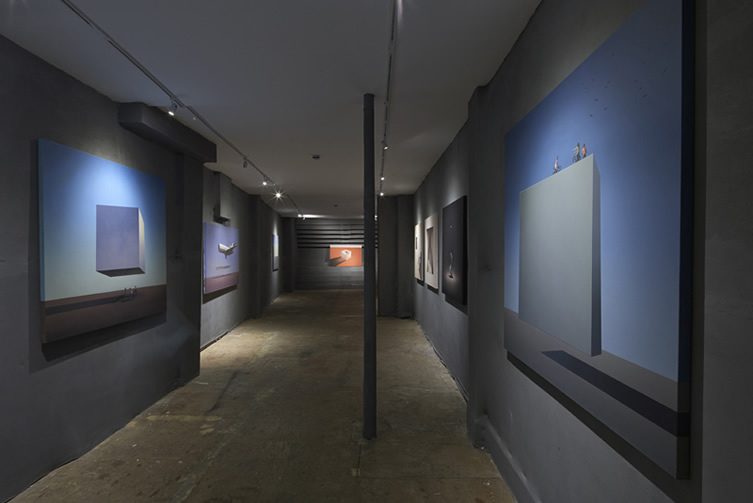
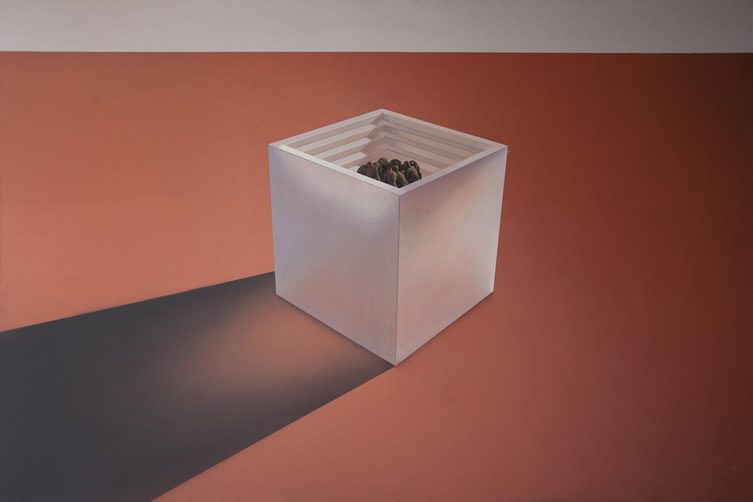
Mehdi Ghadyanloo,
Ceremony of Distress, 2015
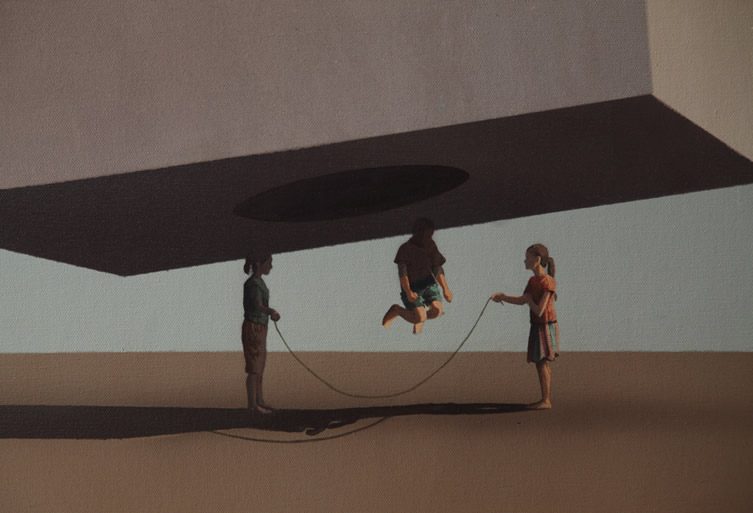
Mehdi Ghadyanloo,
Hat Trick without Encouragement (detail), 2015
Ghadyanloo has been trying the streets of London out for size with new mural work (his first outside Tehran), painting several pieces including two at over 100 sqm. As well as these attention-grabbing projects, Howard-Griffin is equally excited by the events within the gallery — where a large-scale sculptural installation representing the Soviet architectural influence of Ghadyanloo’s homeland has been created as a backdrop to a selection of the artist’s extraordinary canvas work. State domination ensures Iranians have a hard time holding open dialogues, but art is an area where metaphor can speak volumes where otherwise debate would be stifled, and Ghadyanloo’s paintings are full of commentary.
With these canvases, Ghadyanloo allows himself to explore a slightly darker, more sombre side to life in modern day Iran, in which the shadow of colossal, brutal objects hover over vulnerable figures, casting vast shadows and threatening to crush that which lies beneath. The environment often dwarfs the people within them, which in itself creates an air of isolation and a paradoxical sense of confinement. Mysterious chasms, shafts of light piercing an otherwise impenetrable blackness, and stairways with unknown or impossible destinations suggest futility, although the paintings show that despite the challenging conditions, life goes on, children continue to be children, and that beyond the shadows there is a brighter possibility.
The exhibition is accompanied by a catalogue containing analysis, essays and interviews with leading scholars on Iranian art. Perception is running at Howard Griffin Gallery, Shoreditch, until 2 April.
***
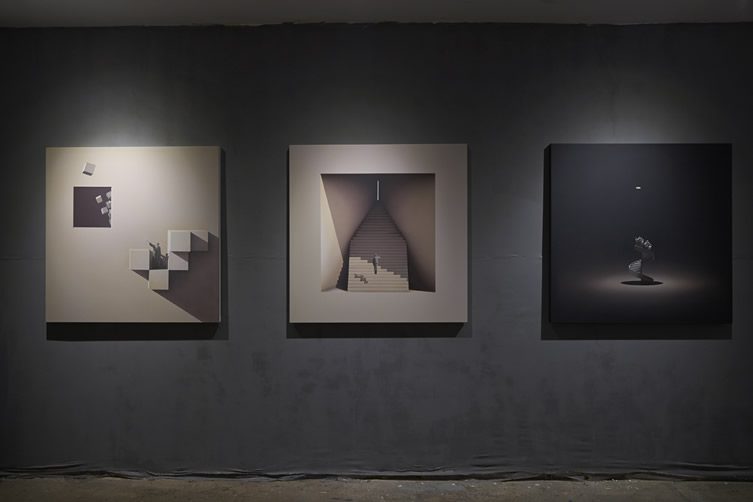
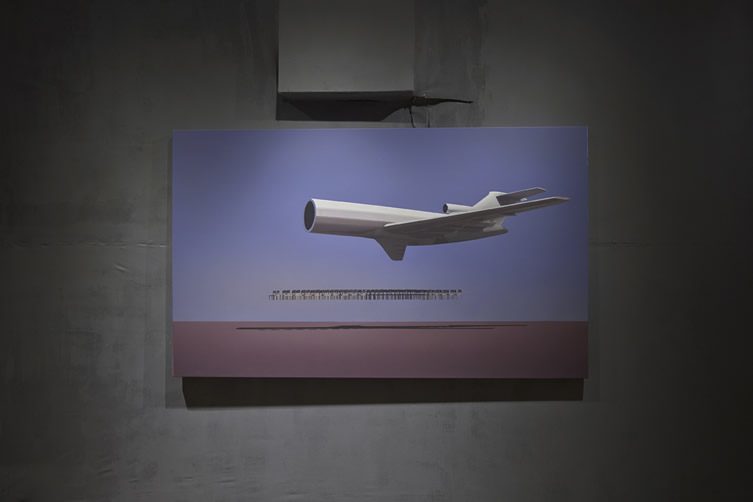
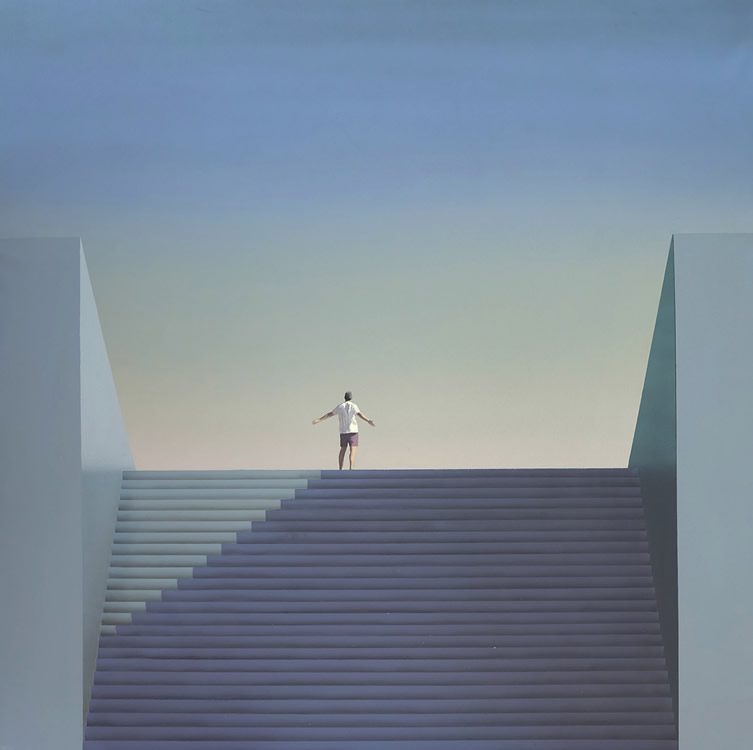
Mehdi Ghadyanloo,
An Illusion of Happiness, 2015
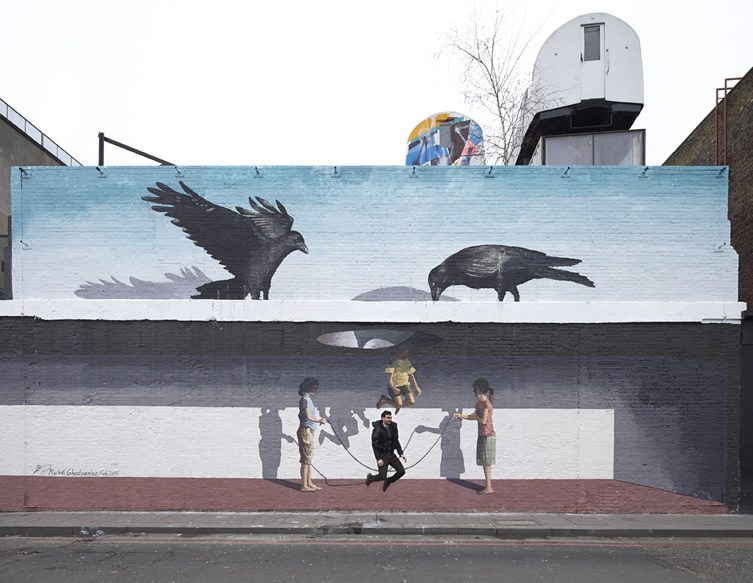
Mehdi Ghadyanloo London mural
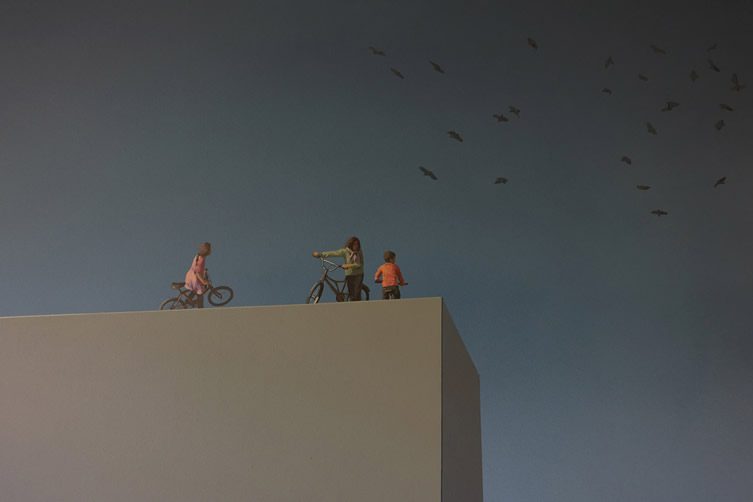
Mehdi Ghadyanloo,
Destiny Riders (Detail), 2015
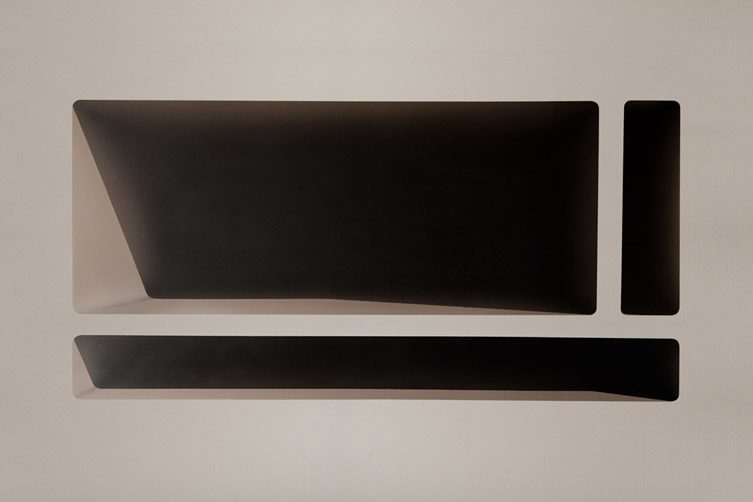
Mehdi Ghadyanloo,
Diagram of Anticipation, 2015
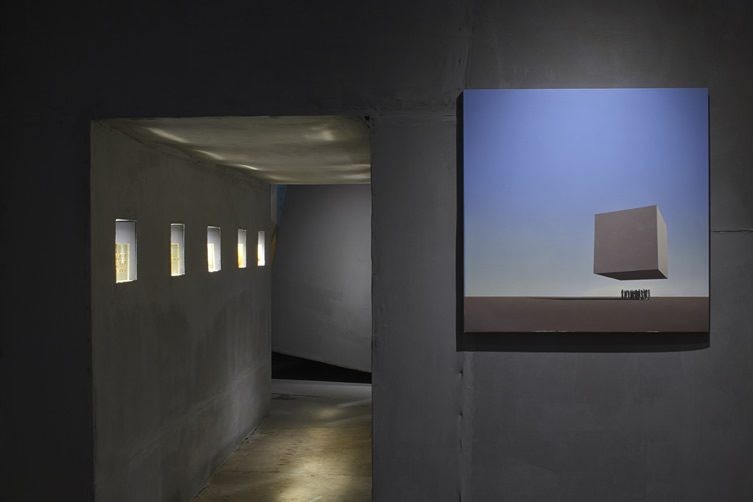
Photography, Marcus Peel




